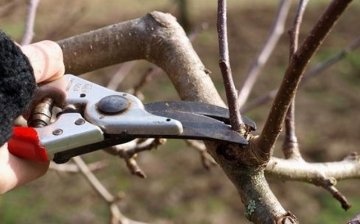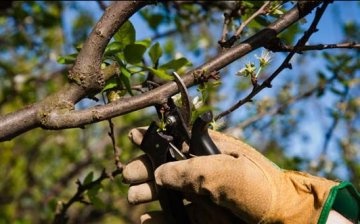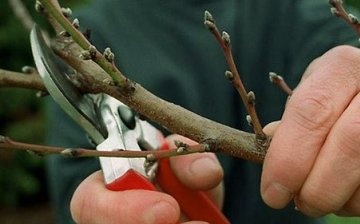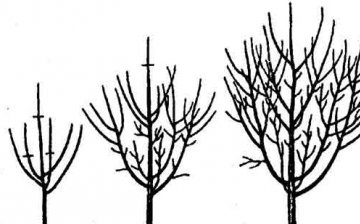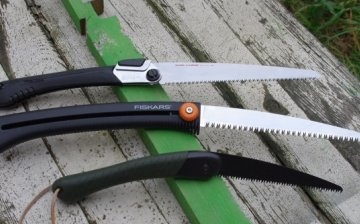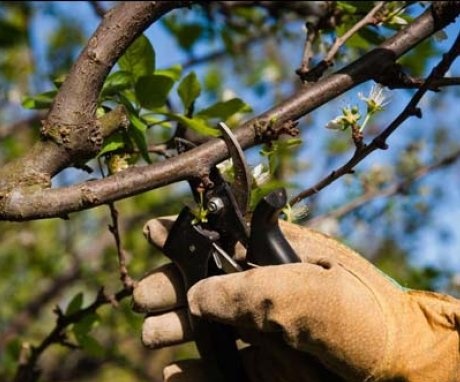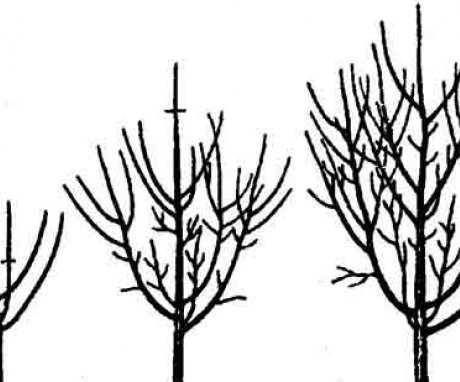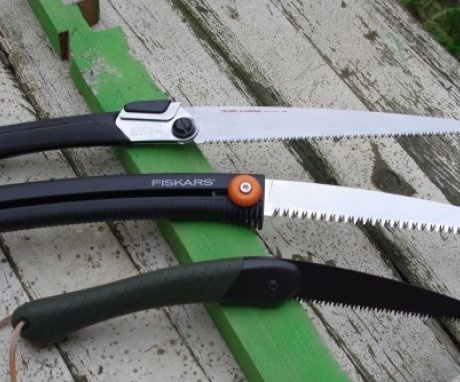Cherry pruning in spring: types and rules
During the spring trimming it is necessary to adhere to the main rule - the trees should not have time to "wake up" after the winter rest, that is, before the start of sap flow. It is necessary to carry out the manipulation before the buds bloom, but the air temperature should be consistently warm.
You should also preserve the growth buds and do not cut the ends of the branches. Such injuries lead to the death of the entire branch. But if the spring pruning is done according to all the rules, then the cherry tree dates the growth of side branches, on which the bulk of the berries are tied.
Content:
- Types of pruning and their purpose
- Terms and rules for spring pruning of cherries
- Formation of the crown of a young tree
- Features of care after pruning
- The main mistakes when pruning cherries
Types of pruning and their purpose
Gardeners use three types of cherry pruning:
- Forming, with which the crown of a tree is modeled. The branches are cut in a specific order at each tier. Such manipulations are the basis for the correct development of the tree, which contributes to obtaining a generous harvest of berries and increasing the tree's immunity to diseases.
- Rejuvenating, which is used to prune old trees with a thickened crown and which have ceased to bear fruit. The effect will be visible as early as next spring, when the trees will bloom profusely and give a good harvest of berries. In the spring, such pruning is carried out if the tree is old and does not bear fruit, and in the fall fruitful, but overgrown trees are rejuvenated.
- Sanitary, the main goal of which is to rid the tree of damaged, infected and dried branches. Manipulations are carried out in spring and autumn. The cut branches must be destroyed. If the branches are damaged under the weight of the harvest or at this time the tree is infected, then sanitary pruning is carried out during the fruiting period. But this must be done very carefully and if there is an emergency.
Pruning activities promote uniform lighting and air exchange in the tree crown, increase resistance to cold and disease, facilitate cherry care and extend the life of trees. And also reduce the risk of damage by pests.
Terms and rules for spring pruning of cherries
It is necessary to carry out spring pruning before the buds wake up, but after establishing a round-the-clock positive temperature. Then the trees will receive minimal injuries and quickly recover. Depending on the region of growth, buds cherries begin to wake up from the second half of March to the first half of April. Springtime is good for shaping pruning, so special attention should be paid to skeletal branches. It is also necessary to carry out sanitary pruning and rid the trees of frost-injured and thickening branches that are directed deep into the crown.
Cherries up to five years of age are distinguished by excessive branching, so their branches are cut off almost completely, leaving no more than half a meter in length. The branches of older and stronger trees are cut off selectively, removing up to 25-30 cm of their length. Cherry trees have powerful trunks and developed main shoots.There is a clear distribution of the main branches by tiers. The shape of the crown can be pyramidal, broadly spreading or spherical.
When pruning cherries, they usually form a sparse-tiered, less often - a cupped crown (the former is suitable for varieties with intensive branching).
When forming the crown, you need to adhere to the single placement of branches. The angles of departure from the trunk should be no more than 45 degrees, otherwise the risk of fragile branches breaking off with the formation of deep poorly healing wounds that cause illness and death of the entire tree increases. The laying of semi-skeletal branches of the first tier should be carried out in two, but keep the interval between them at least half a meter. They should be positioned obliquely, so they are often tied, giving the desired position.
Strongly branching young trees are additionally pruned in the summer to accelerate crown formation. In addition, such pruning stimulates the formation of flower buds and bouquet twigs. The formation of semi-skeletal branches begins when the length of the shoots reaches 75-85 cm. They need to be shortened by 20 centimeters, taking into account the subordination of the branches. Shoots that are not part of the frame are cut off, leaving 25-35 cm in length. The height of the cherry tree crowns must also be shortened to 4 or 5 meters. The main branches should be cut above the outer branches.
Formation of the crown of a young tree
Most often, cherry trees are formed in tiers and the crown is formed by 8 main shoots, which are distributed over three tiers. The lower one is formed by three or four skeletal branches evenly distributed around the circumference of the trunk, the second tier is laid 65 cm higher than the first, and the interval between the shoots is kept about half a meter.
The scheme itself is quite simple and is carried out in stages in the spring:
- In the first year after planting young trees with strong lateral branches, the lower branches are cut off by 55-65 cm, and the remaining ones - at the level of their cuts. The trunk is also shortened, which must be cut off by 25-27 cm. The branches that form an acute angle with the trunk must be cut. If the seedling has only one or two lateral branches, then they are cut four to five buds from the base, and the trunk is five to six buds higher. In this case, the laying of the first tier is carried out next year. If the seedling does not have side branches, then you need to measure the height of the trunk, above which five or six buds are left, and the rest is cut off.
- The next year, there is no large increase, so it is enough to balance the future branches of the skeleton by cutting them 17-23 cm higher than last year's cuts. All branches that are directed towards the trunk are removed.
- In the third year, cherries are cut based on the degree of growth of the tree: in seedlings that were planted with strong lateral branches, the first tier of the crown is laid, directing them in opposite directions; for two- and three-year-old seedlings, the second tiers are laid and the crown is thinned out.
- In the fourth year, they continue form a crown, but only those branches that have grown by more than half a meter are pruned, and all unnecessary ones are cut out.
Four years later cherries enter the season of fruiting and the formation of the crown is completed, and the pruning is carried out by supporting and sanitary.
Features of care after pruning
Cherry trees do not require special care after pruning, the main thing is to process and close all sections within 24 hours. For processing, antiseptic preparations are used, and for closing they use garden varnish or oil paint. Follow-up care is reduced to standard procedures.
Features of tree care:
- Fertilization. Spring feeding of cherries is carried out with the establishment of a positive temperature. During spring planting, a supply of fertilizers is laid in the planting pits, which is enough for three years, but they do not contain enough nitrogen.Therefore, since the second spring, cherries are fed with urea - the first dosage is 120 grams. It is distributed along the peristemal circle and slightly dripped. Since the third spring, a urea solution (20-30 grams per bucket of water) is used as top dressing, which is watered on trees in May or June. From the fourth year, cherries are fed with ammophos and humus, and to strengthen the bark, potassium sulfate or granular superphosphate is introduced in accordance with the instructions.
- Irrigation. For cherries, a large amount of water is not required, because when overflowing, the berries lose their sugar content, become watery and quickly rot, root system can attack rot and mold around the trunk. Experienced gardeners advise watering trees only a few times per season, but by autumn watering is reduced or stopped completely. The amount and frequency of watering is adjusted according to the weather. In hot and dry summers, a bucket of water should be poured under each tree once or twice a month. And if it often rains in summer, then you should not water the trees.
Under favorable conditions cherries blooms in March-April. During this period, there is a risk of developing fungal diseases. Especially dangerous is clasterospiriosis or perforated spot that affects all parts of the tree. For processing, copper-containing preparations are used in the form of copper sulfate or a solution of Bordeaux liquid. Spraying is carried out in two stages: the first - when buds appear, and the second - when they bloom.
A common problem is gum leakage, which develops as a result of mechanical damage.
To help the tree, clean the damaged area from the bark and cover it with garden varnish or other suitable compound. The main enemies of cherries from insect pests are cherry aphids - small black bugs that become more active in early spring. With their attacks, the leaves begin to curl and darken, and eventually fall off.
To protect cherries from these pests, biological agents are used in the form of a soap solution with the addition of a decoction. garlic, Luke or dandelion. Trees should be sprayed at the first sign of damage, and repeated if necessary.
The main mistakes when pruning cherries
To the list of the main mistakes when pruning cherries are ranked:
- Insufficient shortening of the seedling shoots during planting and a high laying of the lower tier of the main branches. As a result, the crown of the tree begins at a height of one and a half meters and the bulk of the berries will be concentrated above two meters from the ground. This makes it difficult to pick berries and ensure proper tree care.
- A hasty shoot-laying on the second and third tiers. If the main branches of the lower tier are weakened or there are few of them, then later they die off, which leads to an overestimation of the base of the crown.
- Excessive pruning of branches, which promotes the formation of fruit buds and the rapid growth of the tree.
- Insufficient shortening. When pruning long branches, they must be shortened by at least half the length, otherwise they will not be tied to fruits.
You should listen to the opinion of experts regarding pruning so that cherry trees develop correctly and give generous yields of quality berries. The main thing is not to rush with the formation of the crown and wait until the branches of the previous tier are sufficiently strong.
By following the pruning and maintenance advice of experienced gardeners, you can grow good, strong trees that will delight you with regular and generous harvests. But you need to take care of the trees all year round, and for the winter, insulate the near-stem circle to prevent freezing.
More information can be found in the video:



